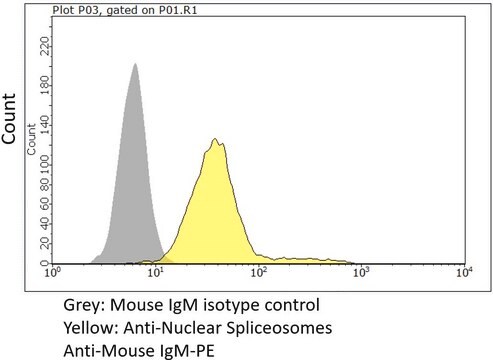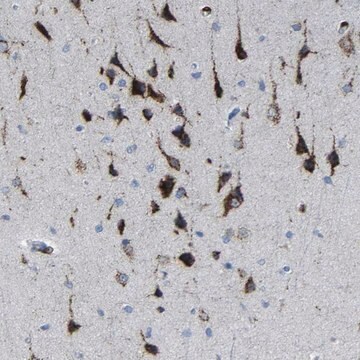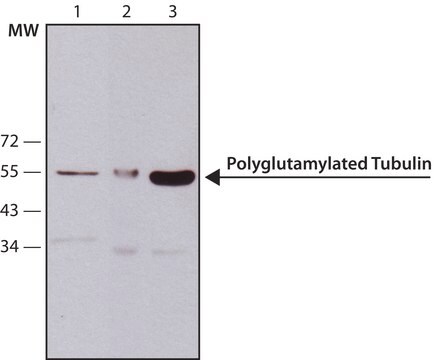ABE1387
Anti-Nuclear factor 1/C Antibody
serum, from rabbit
Synonim(y):
Nuclear factor 1 C-type, NF1-C, CCAAT-box-binding transcription factor, CCAAT-box-binding transcription factor, CTF, Nuclear factor I/C, NF-I/C, NFI-C, TGGCA-binding protein
About This Item
Polecane produkty
pochodzenie biologiczne
rabbit
Poziom jakości
forma przeciwciała
serum
rodzaj przeciwciała
primary antibodies
klon
polyclonal
reaktywność gatunkowa
mouse, rat, human
metody
ChIP: suitable
electrophoretic mobility shift assay: suitable
western blot: suitable
numer dostępu NCBI
numer dostępu UniProt
Warunki transportu
wet ice
docelowa modyfikacja potranslacyjna
unmodified
informacje o genach
human ... NFIC(4782)
Opis ogólny
Specyficzność
Immunogen
Zastosowanie
Electrophoretic Mobility Shift Assay (EMSA): A representative lot of this antibody has been reported to work in EMSA. See Johansson E.M., et al. (2003) and Kannius-Janson, M., et al. (2002).
Epigenetics & Nuclear Function
Transcription Factors
Jakość
Western Blotting Analysis: A 1:1000 dilution of this antibody detected NFIC isoforms at ~45-55 kDa in a U251 cell lysate.
Opis wartości docelowych
Postać fizyczna
Przechowywanie i stabilność
Handling Recommendations: Upon receipt and prior to removing the cap, centrifuge the vial and gently mix the solution. Aliquot into microcentrifuge tubes and store at -20°C. Avoid repeated freeze/thaw cycles, which may damage IgG and affect product performance.
Inne uwagi
Oświadczenie o zrzeczeniu się odpowiedzialności
Nie możesz znaleźć właściwego produktu?
Wypróbuj nasz Narzędzie selektora produktów.
Kod klasy składowania
10 - Combustible liquids
Klasa zagrożenia wodnego (WGK)
WGK 1
Certyfikaty analizy (CoA)
Poszukaj Certyfikaty analizy (CoA), wpisując numer partii/serii produktów. Numery serii i partii można znaleźć na etykiecie produktu po słowach „seria” lub „partia”.
Masz już ten produkt?
Dokumenty związane z niedawno zakupionymi produktami zostały zamieszczone w Bibliotece dokumentów.
Nasz zespół naukowców ma doświadczenie we wszystkich obszarach badań, w tym w naukach przyrodniczych, materiałoznawstwie, syntezie chemicznej, chromatografii, analityce i wielu innych dziedzinach.
Skontaktuj się z zespołem ds. pomocy technicznej






